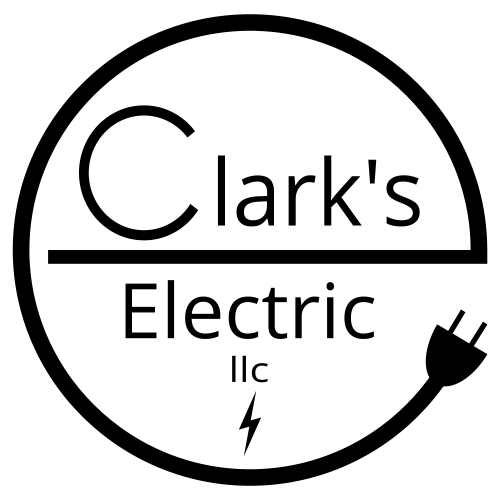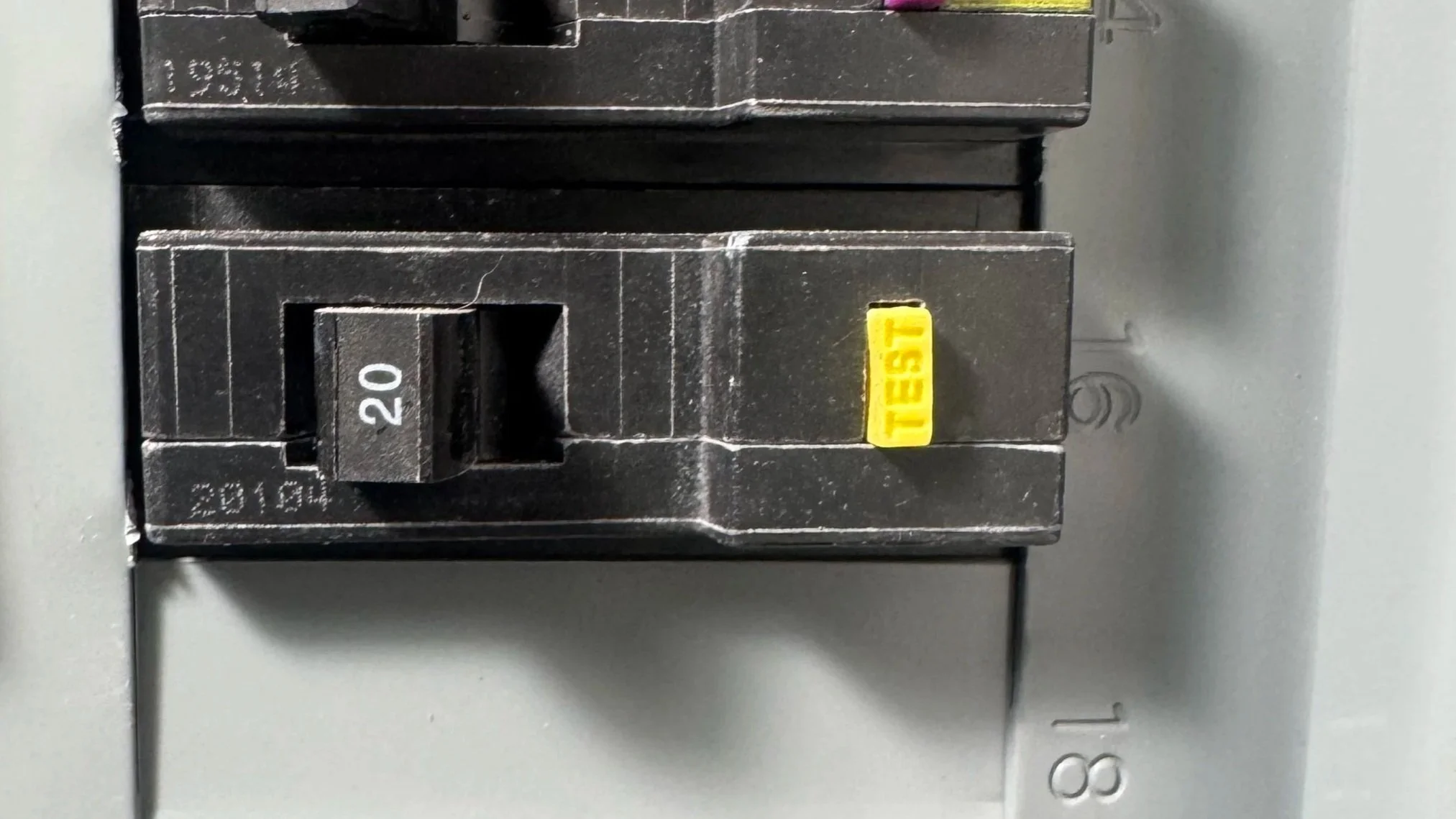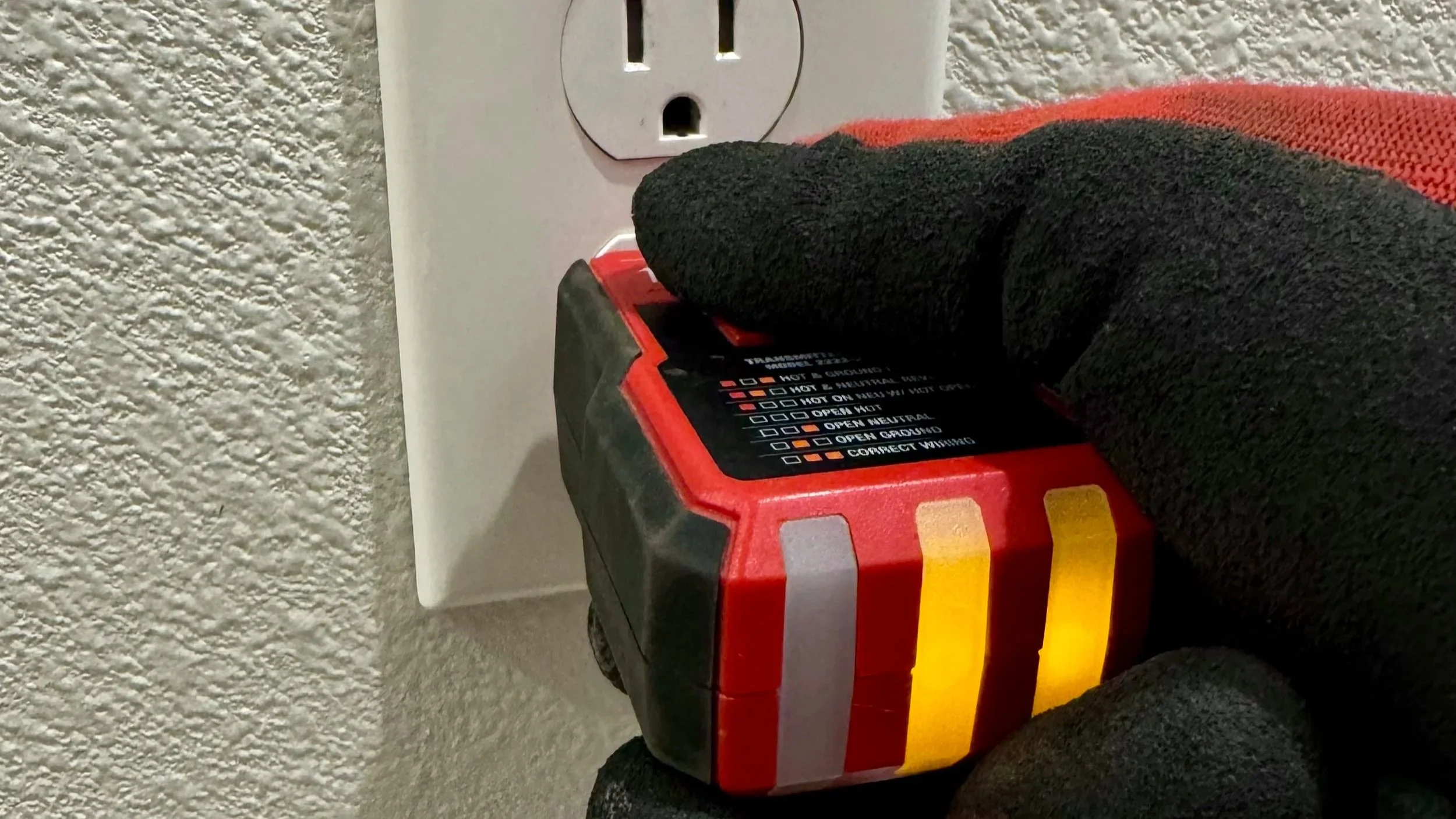GFCI receptacle outlets
What is a GFCI outlet? What does it do? Where are they required in your home?
Answers and more…
Maybe you’ve noticed an outlet in your home with a couple buttons on it. You haven’t thought too much about the purpose of this outlet or its buttons. But sometimes the outlet trips and you don’t really know why. This can be annoying, especially if you’re trying to do laundry, there’s a freezer plugged in, or other outlets in the area also don’t seem to be working. Can you get rid of this button outlet and just replace it with a standard outlet? The answer is likely no. The outlet with the buttons is probably a GFCI outlet and it exists for the safety of your home. It functions to protect you against electric shock. You can alleviate some stress by understanding the purpose of a GFCI outlet, where it’s required, why it may be tripping, and knowing when to push its buttons. You’ll also recognize safety issues and potentially how to fix them, even before you call the electrician.
To start, GFCI stands for “ground fault circuit interruptor”. GFCI devices are designed to be extremely sensitive to ground fault situations, which occur when electric current escapes from its intended path. This is often due to a fault in equipment, damaged wiring, or contact with water. Regarding home safety, if water comes in contact with electricity, then the GFCI device will almost instantly trip itself. This saves you from electric shock due to contact with energized water. Moreover, if any equipment (such as a washing machine or freezer) has faulty wiring that results in a ground fault, then the GFCI device will trip to save you from electric shock. You may look at the equipment and not see the electrical danger, but a properly functioning GFCI device does.
At your home, if there’s potential for water or moisture to come into contact with electricity, then the the National Electric Code requires GFCI protection. Listed below are the locations around your home where receptacle outlets are required to be GFCI protected. (NEC 2023, 210.8(A))
Bathrooms: All outlets in bathrooms should be GFCI protected, as they are often near sinks and water sources.
Garages: Outlets in garages and accessory buildings* should be GFCI protected, to protect from nearby water sources or use of tools and equipment.
Outdoor Areas: All outdoor outlets must be GFCI protected to prevent electric shock from moisture exposure.
Crawlspaces: GFCI protection is required for receptacles in crawlspaces at or below grade level, as they could be subject to moisture or flooding.
Basements: GFCI protection is required for receptacles in basements as they could be subject to moisture or flooding.
Kitchens: All receptacle outlets in a kitchen are required to be GFCI protected.
Areas with sinks and permanent provisions for food preparation, beverage preperation, or cooking: Wet Bars and kitchenettes fall into this category.
Sinks: Where receptacle outlets are installed within 6 ft from the top inside edge of the bowl of the sink. A receptacle next to a sink in a mudroom would be an example of this.
Boathouses
Bathtubs or shower stalls
Laundry areas
Indoor damp and wet location
In addition to receptacle outlets that require GFCI protection, specific appliances also require GFCI protection (NEC 2023, 210.8(D)). These appliances are listed below. Not all of these appliances may be in your home, but some of them probably are.
Automotive vacuum machines
Water coolers and bottle fill stations
High pressure spray washing machines
Tire inflation machines
Vending machines
Sump pumps
Dishwashers
Electric ranges
Wall-mounted ovens
Counter-mounted cooking units
Clothes dryers
Microwave ovens
In spite of these requirements, not all homes have adequate GFCI protection. Older homes may have been built in an era where GFCI codes were not as complete as they are today. This can result in GFCI protection for some hazardous areas yet not others. Or it can be hard to find a GFCI device to reset it. For example, the outlets in the garage may be protected by the GFCI device in the basement. The oldest homes might not have any GFCI protection at all, because their construction predates the codes for it. Any remodeling or outlet replacement in older homes will need to be updated with GFCI protected receptacles in locations requiring it. If you live in an older home that lacks GFCI protection, particularly in areas near a faucet, then its a good idea to have GFCI protection installed.
So what do the buttons do?
GFCI receptacle outlets should be labeled as “GFCI”* on the face. There is also a “test” button and a “reset” button. The “test” button will trip the GFCI if pressed. This is how you know it works. The “reset” button will restore power unless a faulty condition still exists. For instance, if one end of an extension cord is resting in a rain puddle, and the other end is plugged into a GFCI protected outlet, then the GFCI device will not reset until the puddle dries out and the threat from energized water is gone.
One GFCI receptacle outlet may be protecting other non-GFCI outlets connected downstream from it. To illustrate, you may have noticed that some of the outlets in the bathrooms of your home do not have buttons. That’s because it’s common that the outlets in all the bathrooms are connected to a GFCI outlet in just one of the bathrooms. This is also true in the kitchen, where usually just two GFCI outlets protect all the other outlets serving countertop areas. Pushing the “reset” button on the GFCI device should restore power to the other outlets protected downstream from it.
GFCI circuit breakers
GFCI receptacle outlets aren’t the only devices that can provide protection. There are also GFCI circuit breakers that protect all the outlets connected to it. It’s important to know if the required receptacles in your home are protected by a GFCI outlet or circuit breaker, so you know how to test or reset the GFCI protection. GFCI circuit breakers are found either at the main electrical panel or a sub-panel, and they can be reset by turning the tripped breaker handle off and then on again. You’ll know it’s tripped because the handle should be midway between “on” and “off” before you reset it.
Testing an outlet with a GFCI plug tester
GFCI plug testers have a “test” button on them
Testing GFCI outlets and circuit breakers should be done regularly. It is recommended to test them monthly to make sure they work. The easiest way to test is to simply push the “test” button on the outlet or breaker. If it doesn’t trip, then it’s time to replace it. Some GFCI outlets even have a light that indicates “replace” on it. You can also buy a GFCI plug tester, which allows you to test and trip outlets that do not have buttons but are connected downstream from GFCI devices. The plug tester will also inform you of other issues an outlet may have. Keep in mind that a plug tester will not trip a GFCI outlet that is “ungrounded”. If you have concerns about ungrounded outlets and GFCI protection, then you can always contact an electrician.
Having said all this, not all GFCI tripping is due to water exposure or faulty equipment. There could be other issues. A GFCI device could simply be bad or past its functioning lifespan. There could also be instances where equipment and wiring installations can cause “nuisance” tripping. An example of this could be a refrigerator that is not on its own dedicated gfci circuit, or an electric range that leaks current through the oven’s heating coils, but is otherwise new and operational. Consulting an electrician can help you diagnose the cause of potential nuisance tripping.
In a nutshell, you can save money and have peace of mind by knowing about GFCI protection, where it’s required, how to test if it’s working, and how to reset it. You won’t need an electrician to come over and push the “reset” button for you and then hand you an invoice for their time. Of course, if you have any doubts or questions, you can always contact an expert. We can help you with troubleshooting, installing, and planning.
*”GFCI” should not be confused with “AFCI”. GFCI or GF (ground fault circuit interruptor) primarily protects against potential shock hazards while AFCI or AF (arc-fault circuit interruptor) primarily protects against potential fire hazards. Both types of protection are required in homes. Some devices and circuit breakers have dual protection, both AF and GF and they should be labelled as such.




